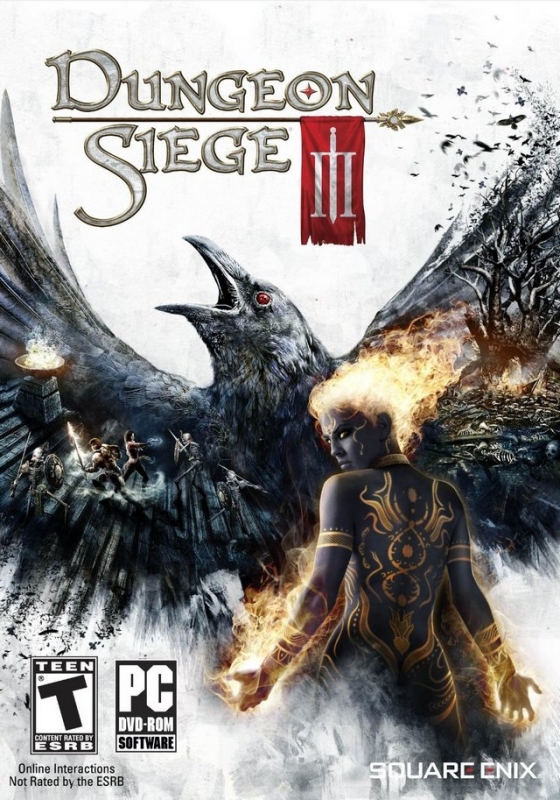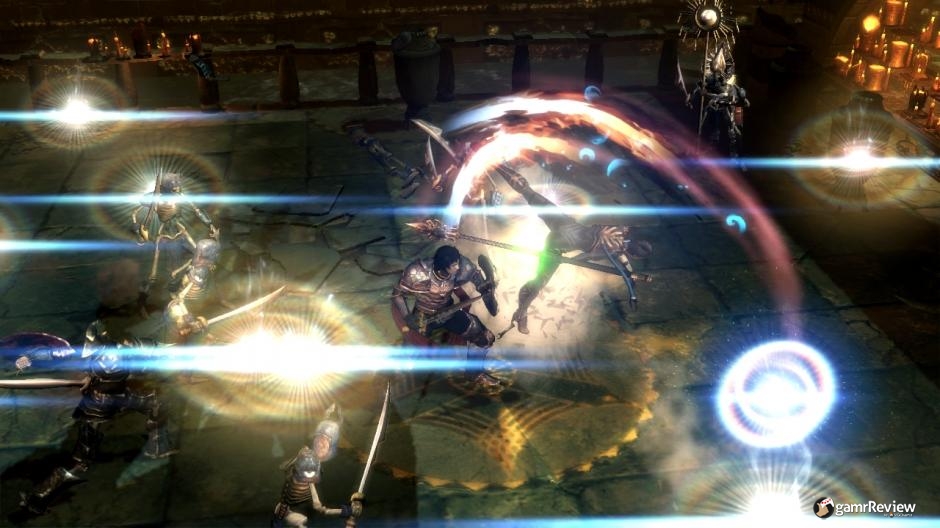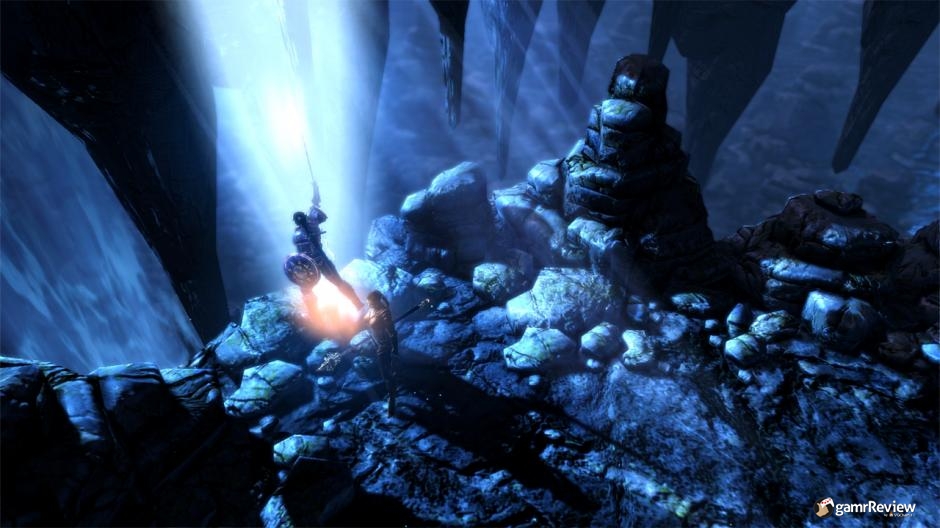Existing User Log In
New User Registration
Register for a free account to gain full access to the VGChartz Network and join our thriving community.





America - Front


America - Back

Isometric RPGs were all the rage a decade ago. They are top-down, dungeon crawling exploits in which the search for better equipment is just as important as advancing the story. With the advent of more advanced graphics, details got better, allowing developers to bring the camera down to eye level and still make the games look great. For us older gamers, there’s still a soft spot in our hearts for the isometric RPG, and Dungeon Siege III proves that an isometric RPG doesn’t have to be called Diablo to be great.
Dungeon Siege III is only loosely related to the first two Dungeon Siege games in terms of story. It takes place in the same world, but there’s not much else connecting them. You take on the role of a member of the 10th Legion, a group of soldiers and mages that once guarded the realm, but were nearly wiped out 30 years ago. Odo, one of the few survivors, is trying to reform the Legion, and brings in several descendants of original Legion members. You are one of these descendants.
There are four characters to choose from, each with their own unique strengths and abilities. Lucas is the warrior and Anjali is an archon, which is like a half-human/half-fire elemental. Reinhart is the mage and Katarina wields guns and casts curses. These aren’t just character classes, but fully fleshed characters with their own backstories and personalities. Fans of the original games may be a bit disappointed with the more character-driven, class-based character system with less customization than in earlier games, but this new setup works very well in multiplayer, since the four characters work together with great synergy. Most abilities not only damage your opponents, but can also buff your companions.
Combat is deep and yet easy to learn. Each character has two combat stances, usually one for dealing with a single enemy and another for dealing with groups. This not only affects basic attacks, but available abilities as well. For instance, Lucas uses a sword and shield in one stance along with quick-striking abilities. His other stance uses a two-handed sword along with slower, heavy-hitting abilities. Reinhart uses one stance with melee attacks and powerful, single-target abilities while his other stance attacks multiple enemies at range and uses area of effect abilities.

Obsidian, the developers, managed to take a Diablo-style game and build in cooperative multiplayer that feels more like the endlessly-fun Gauntlet Legendsgames. Up to four players (two on a couch, up to four online) share the same screen, gold, and inventory. In conversations, the lead player makes decisions, but the other players can use the conversation wheel to tell the lead player what their choice would be.
This multiplayer experience is easy to drop in and drop out of and works great most of the time. In the campaign, a companion constantly accompanies you, which is one of the other three characters you didn’t choose to start the game with. This means the game is already balanced for two characters. The AI just shifts to focus on both players instead of just you. When you jump online and exceed two players, the enemies level up to keep the challenge alive. The multiplayer is hampered occasionally if you drop into a game as a character the lead player has never kept or purchased equipment for. Then you’re a proper level character with basic starting equipment; an unenviable position.
Speaking of decisions (back a couple sentences, it’s up there), there are many in Dungeon Siege III and they have significant impact on the game. They don’t just contribute to the ending movie: sparing certain characters or forging certain alliances will have an effect on the game as you progress. This makes for a different experience every time you play the game, particularly if you have a friend make all the decisions the next time through. The game is also populated with numerous side-quests that you can take or ignore at your leisure.
For most of Dungeon Siege III, the game looks gorgeous. The textures and environments are truly beautiful and dynamic from place to place. From the burning innards of the Montbarron Estate to the eerie canopies of The Mourweald to the snowy peaks above Glitterdelve, Dungeon Siege III truly transports you to the world of Ehb. It’s also great seeing many of the great locales from the original Dungeon Siege games redone in glorious HD. However, whenever the game zooms in for a conversation, the textures show themselves as lower quality than many other recent releases. Cut scenes are done with 2D renditions made to look like ink drawings on parchment. It’s a nice choice, but one that’s been done all too often and just comes off as too easy.

The sound design is passable in Dungeon Siege III, but not great. The voice actors are good, but the characters don’t really differentiate very much. It seems none of the characters are really passionate or truly different from one another in behavior. They may pitch different ideas and argue different sides, but they never seem passionate about their opinions. The music is good, but doesn’t really jump out except during the cutscenes. I have a hard time recalling any particular track in particular; they just didn’t grab me.
Dungeon Siege III took me roughly 12 hours to complete the first time through, but with opportunities for two, three, and four-player co-op; the replay value is high. In addition, the four different starting characters and numerous decisions throughout the game will change the course of the story. These push the replay value even higher. So while not a long action RPG, Dungeon Siege III has more replayability than most of its competitors. Still, 12 hours is very short for an RPG.
I’ve missed the isometric RPG. I played a lot of Diablo and Diablo II back in the day, but everything since then has either felt like a cheap Diablo knock-off or has fallen in the Gauntlet Legends or X-Men Legends category: fun but not very deep. Dungeon Siege III has proven to me that this genre is not dead. Obsidian has revived it in dramatic fashion.









